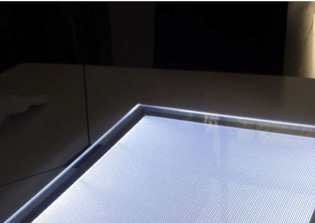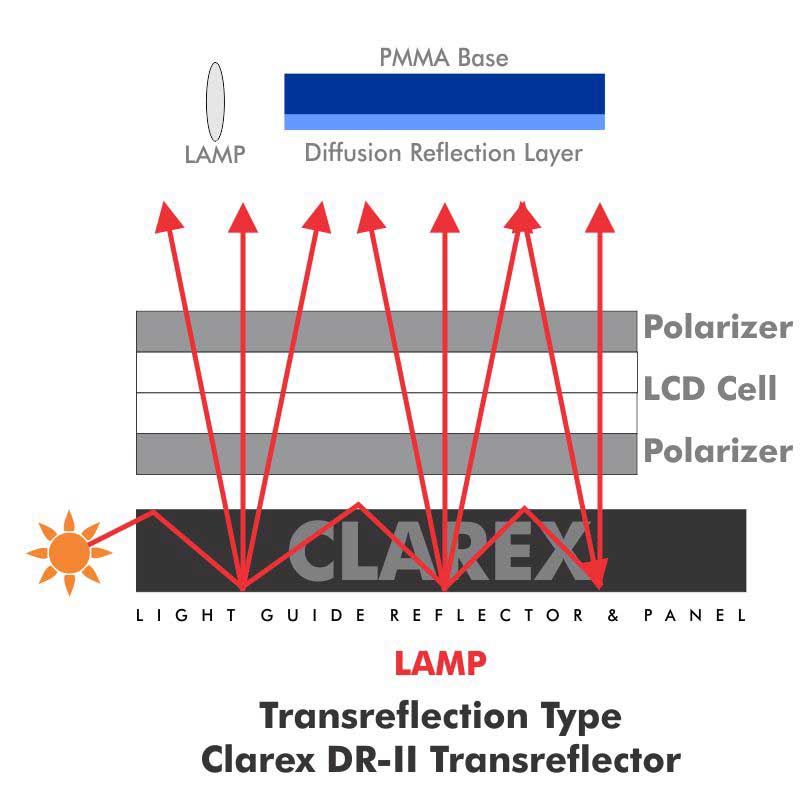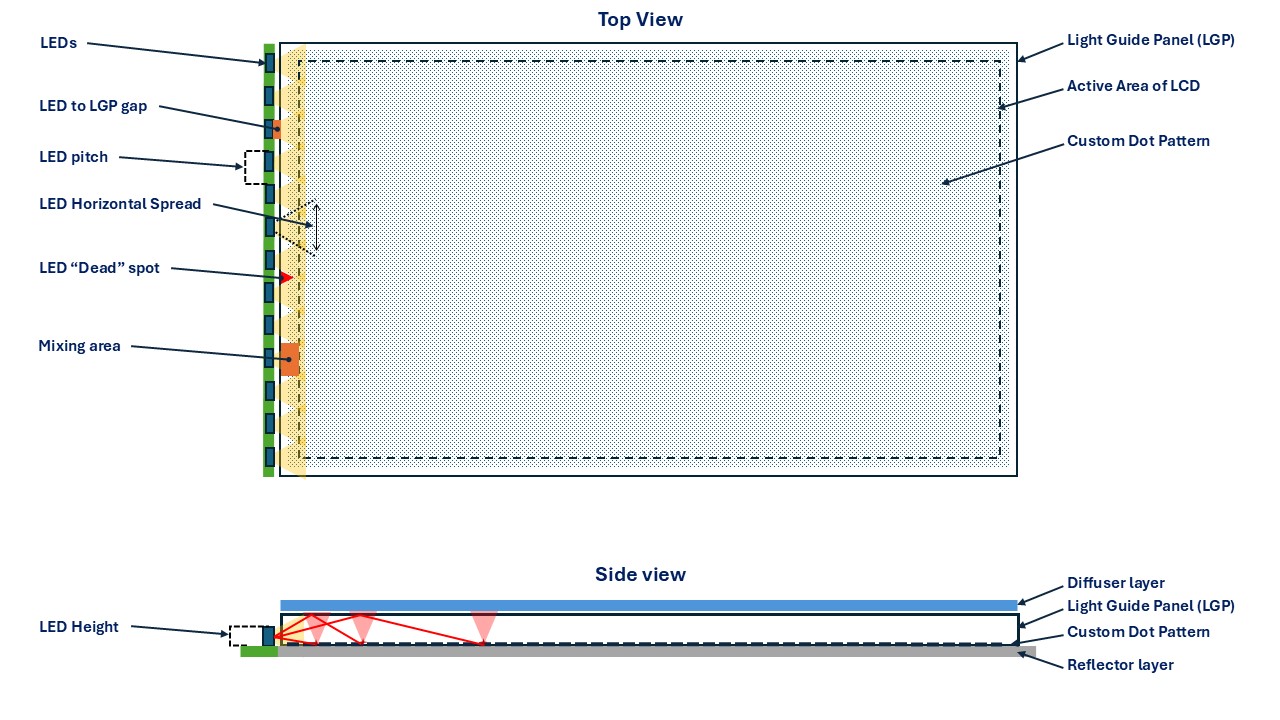CLAREX Acrylic Light Guide Panels & Plates (LGP)
Custom-printed dot patterns designed for your specific lighting unit.
CLAREX light guide panels are custom-designed to integrate with customer-supplied edge-lighting units. A custom-tailored dot pattern is created and printed onto CLAREX clear optical-grade cast acrylic/PMMA. The backlight’s uniformity and brightness are optimized for any lighting configuration. Each custom Light Guide Panel is designed for specific applications and will incur development charges.
Benefits of Light Guide Panels & Plates
- Improved Brightness – Helps boost brightness in displays, making them more vibrant and aesthetically appealing.
- Uniform Light Distribution – CLAREX typically guarantees 70% uniformity using a 9-point measurement for performance consistency.
- Energy Efficiency – Optimizes light source usage, reducing energy consumption in backlighting and lighting applications.
- Customizable – The dot patterns can be designed to backlight an entire area uniformly, or they could be used to only backlight certain spots, such as backlighting the individual keys on a keyboard.


Common Light Guide Panel Applications
- Edge-lit LCD backlights, often for displays, signage, or architectural designs
- Selective backlighting, such as keys on a keyboard or buttons on a control panel
Thicknesses
- From 0.2 to 5.0mm
- The light guide should be thicker than the height of the LEDs. See design guide for more info). Thicker LGPs improve efficiency but require a larger mixing area.
Panel/Plate Size
- Customizable per customer specification
Light Guide Panel Design Guidelines & Considerations

Optical-Grade Acrylic Substrate
- Manufactured using CLAREX optical-grade clear cast acrylic
- Offers excellent long-path light transmission
- Superior thermal stability compared to commercial-grade acrylic
Dot Pattern Customization
- Custom-designed dot patterns based on your lighting unit configuration
- Compatible with 1-, 2-, 3-, or 4-sided lighting, or even individual point sources.
- Dot size and density typically increase with distance from the light source to ensure uniform illumination
- Dot pattern is silk screened onto the rear surface using a proprietary reflective white ink
Stacking & Layering Considerations
- LGPs are typically used with a reflector layer behind and a diffuser later in front
- These additional layers are not included and should not form an optical bond with the LGP when stacked
Thermal Expansion & Mechanical Fit
- The gap between the LEDs and the LGP should be minimal
- CLAREX acrylic expands when heated, therefore, the LGP should be designed and sized with thermal expansion in mind so that there is minimal gap when it is at its maximum size while also considering the tolerance stack of the lighting unit.
- Always maintain some gap between LEDs and the LGP. Restricting outward expansion can cause the panel to bow in the center.
LED Light Panel Guide Positioning & Mixing Zones
- Account for the LED’s specific horizontal luminous spread angle and pitch (separation) to avoid dead zones on the edge.
- CLAREX can compensate for some minor issues by adjusting dot patterns, but dead spots near edges are best avoided
- It’s recommended to include a light mixing area between the panel edge and the active display area. Aim to at least have the LED spread overlapping in the active area.
*CLAREX can adjust the dot pattern in cases with limited space for mixing
Edge Treatments & Optical Enhancements
- A clean machined edge performs better than a polished one, as it slightly diffuses light for better uniformity
- Mirror tape can reflect light on unlit edges, preventing it from ‘escaping’ the LGP, but its effectiveness is limited due to adhesive transmission loss
- CLAREX does not use diffuser tape/film on lit edges. While it may possibly improve uniformity, there is a loss of light input, and ultimately may not be worth the extra cost.
Dual-Mode Lighting
- If using two sets of emitters, such as day and night mode, define one as the primary mode. This will be used as the basis for the dot pattern design.
- Adjustments can be made to improve the secondary mode, but uniformity is typically not as high
- Best practice: configure lighting so both modes benefit from a common dot pattern where possible
How do Light Guide Panels & Plates Work?
Light is directed into the edge of the LGP, where it is ‘captured’ and guided through the panel via internal reflection. This light will continue to travel through the panel until it either reaches the opposite side or encounters a surface disturbance, such as a printed dot of reflective white ink, which directs the light to the desired location.